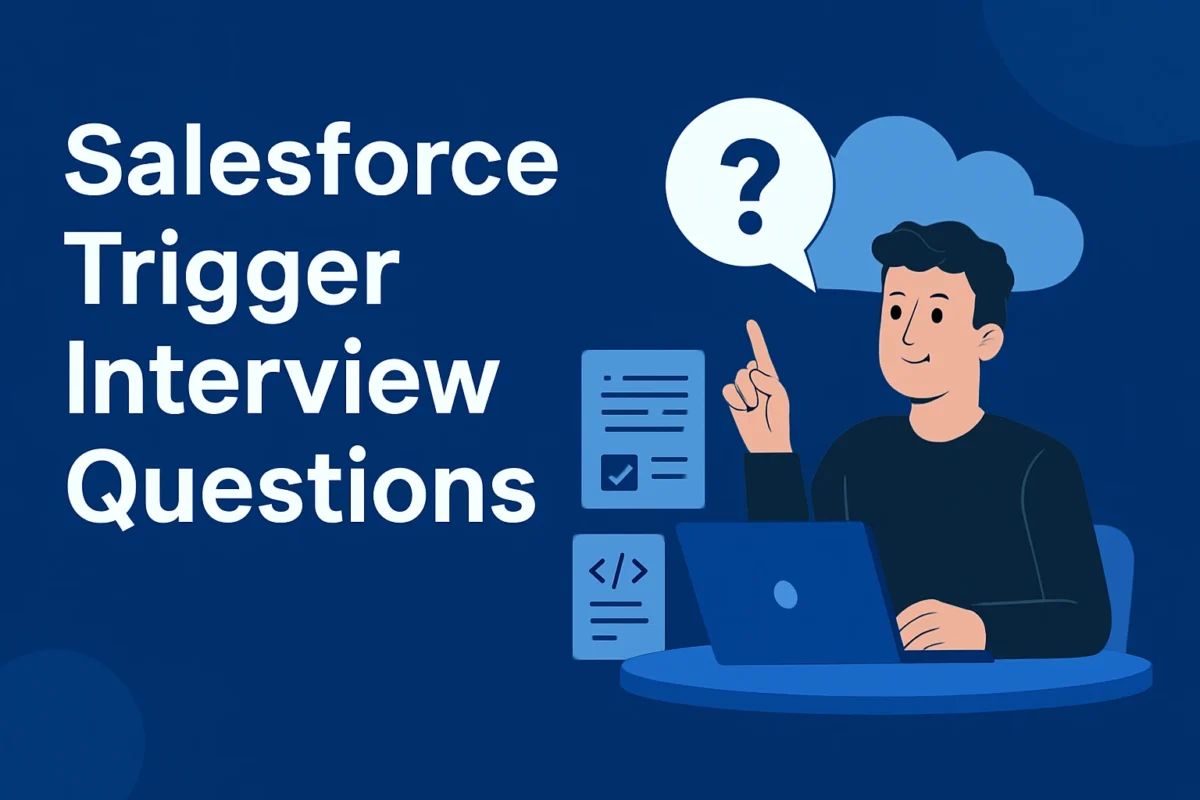
In the world of Salesforce development, triggers are one of the most commonly used automation tools. They help in performing operations before or after records are inserted, updated, or deleted in the Salesforce database. If you’re preparing for a Salesforce developer job, understanding Salesforce trigger interview questions is essential to showcase your skills and land the role.
This guide covers top Salesforce trigger interview questions along with explanations and tips to answer them effectively.
What is a Salesforce Trigger?
A Salesforce trigger is an Apex script that executes before or after a record is inserted, updated, deleted, or undeleted. It is used to perform custom actions, enforce business rules, and handle complex automation logic that workflows or process builders cannot handle.
Top Salesforce Trigger Interview Questions and Answers
1. What is the difference between Before and After Triggers in Salesforce?
Answer:
-
Before Trigger: Executes before the record is saved to the database. Used for validation or modifying values before saving.
-
After Trigger: Executes after the record has been saved. Used when we need the record’s ID or perform actions that require committed data.
2. What are different trigger events in Salesforce?
Answer:
-
before insert -
before update -
before delete -
after insert -
after update -
after delete -
after undelete
3. Can we call a future method from a trigger?
Answer:
Yes, but it must be called from a method in an Apex class, not directly from the trigger. The method should be annotated with @future.
4. How to prevent recursion in Salesforce triggers?
Answer:
By using a static variable in a helper class to track whether the trigger logic has already run, preventing it from executing multiple times in the same transaction.
5. Can we have multiple triggers on the same object?
Answer:
Yes, but it is not recommended because the execution order is not guaranteed. Instead, use a single trigger per object and handle logic in separate Apex classes.
6. How do you perform bulk operations in triggers?
Answer:
By writing bulkified code using collections like List, Set, and Map, and avoiding operations inside loops.
7. What is the best practice for writing triggers in Salesforce?
Answer:
-
Use Trigger Framework for organized code.
-
Bulkify all logic.
-
Avoid SOQL/DML in loops.
-
Write one trigger per object.
-
Use helper classes for logic separation.
8. How to handle governor limits in triggers?
Answer:
By bulkifying code, optimizing SOQL queries, and using batch processes if needed.
9. Can we update the same record in after trigger?
Answer:
Yes, but it requires a separate DML operation since the record is already committed to the database. This can lead to recursion if not handled carefully.
10. What is the maximum number of triggers allowed per object?
Answer:
There’s no fixed limit, but Salesforce recommends having one trigger per object to maintain order and readability.
Tips to Crack Salesforce Trigger Interview Questions
-
Practice writing both before and after triggers.
-
Understand governor limits and how to avoid them.
-
Learn trigger frameworks for clean and reusable code.
-
Use Salesforce’s official documentation and Trailhead for hands-on practice.
You may like: Top LWC Interview Questions
Conclusion
Preparing for Salesforce trigger interview questions requires a mix of theoretical understanding and practical coding experience. By studying these commonly asked questions and following best practices, you can confidently face your next Salesforce developer interview.

